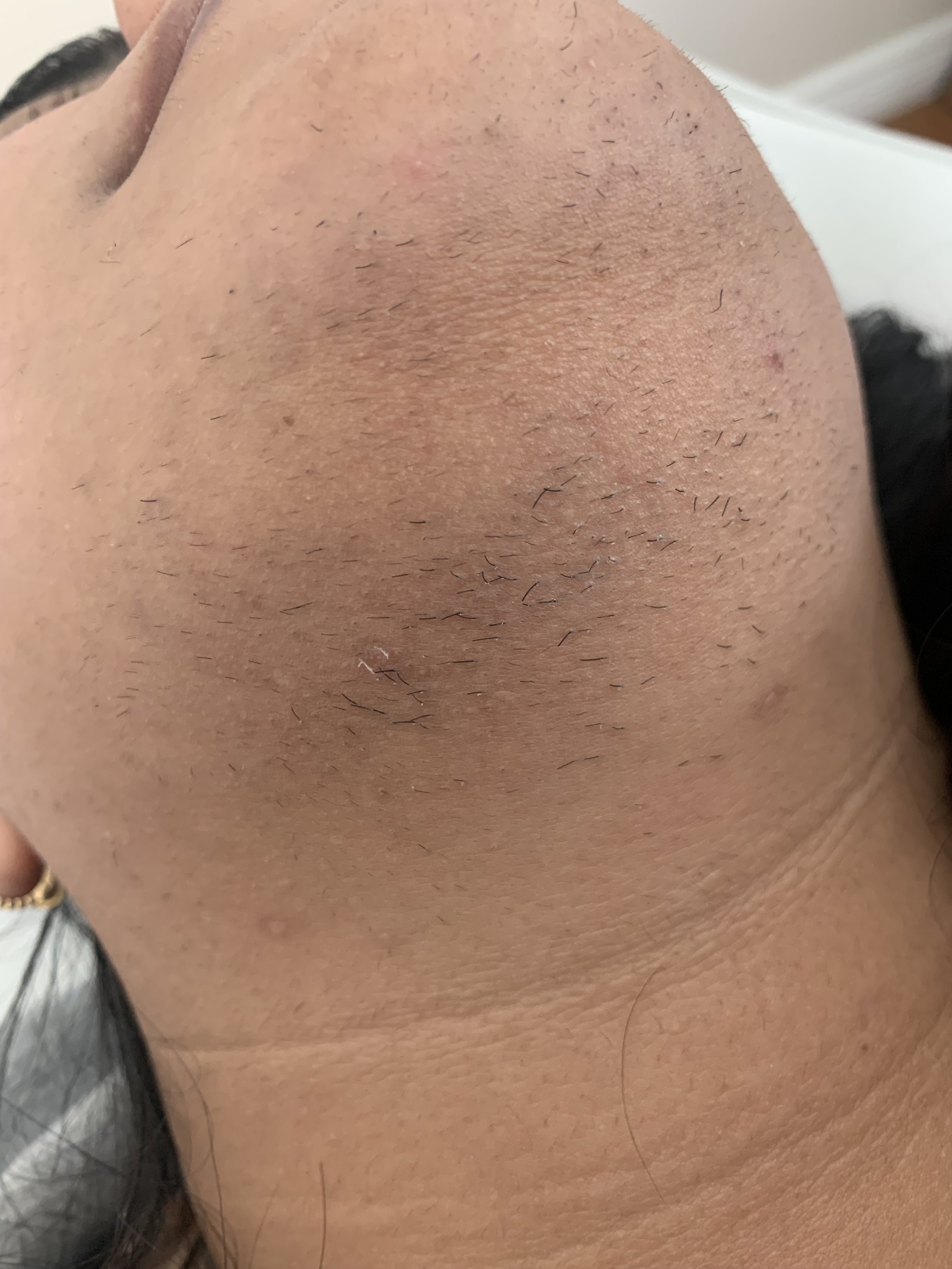
FAQs
-
Electrolysis can only be performed on healthy skin. If there is any evidence of a skin disease or disorder in the treatable area then treatment may not commence. Some conditions may prevent treatment until the skin has healed e.g. cold sores, eczema or active acne etc.
During the consultation the area to be treated will be assessed and in some cases I may require written consent from your doctor prior to treatment.
-
Electrolysis was first invented in 1875 and is proven both effective and totally safe. Advancing technology has meant electrolysis has become more gentle and comfortable, even more effective and remains an affordable, modern treatment increasingly popular today.
-
When electrolysis is performed correctly by a skilled electrologist it is perfectly safe. On your first appointment you will receive a full consultation to discuss your medical history and any reasons the treatment can not be performed.
Following your treatment, you will receive aftercare advice and application of a soothing aftercare gel. It’s essential you follow the advice to prevent any unwanted reaction.
-
Electrolysis can be a little uncomfortable for some people while others can fall asleep during treatment. During an electrolysis treatment a tiny sterile probe is introduced into the opening of the hair follicle. A small burst of energy is released and a sensation will be experienced like a tingle, heat or a minor sting. Everyone has their own individual pain threshold which can be affected by a number of factors:
1) Individual pain thresholds – this can be affected by health, stress, time of menstruation etc
2) Area to be treated
3) Strength and size of hair
4) Skin sensitivity
5) Type of current used
One thing that you can depend on is electrolysis works so any minor discomfort is well worth the results. -
Both laser and electrolysis are very effective for removing superfluous hair. Although they both have their uses, electrolysis is the ONLY FDA-approved permanent method of hair removal. Laser hair removal does have its limitations. The laser is attracted to the pigment within the hair, therefore white, red and blonde hair are not treatable with laser, or people with dark skin. Hair growth as a result of a hormonal imbalance is also difficult to treat. Unfortunately, laser can increase more hair growth, a term called “Paradoxical Hypertrichosis”, and is therefore not recommended on the face and hormonal areas for people of South Asian, Middle Eastern and Mediterranean ancestry and those with PCOS, who are more prone to this condition occurring from laser treatments.
-
There may be some hair growth between treatments. To manage these you can shave or trim the hair as this will temporarily remove them without interfering with the root of the hair and affecting results. Tweezing, threading and waxing must be avoided during a course of electrolysis.
-
Immediately after an electrolysis treatment it is normal for the skin to become red with some bumps. This reaction is temporary and often returns to normal within 24-48 hours. Following your treatment an aftercare product will be applied to calm and soothe the area protecting it from an unwanted reaction.
-
Yes, it is important for hair to be at least a few millimeters long before your electrolysis session. If you have been tweezing, plucking, waxing, or threading, you will need to allow your hair to grow for about 2-4 weeks prior to your appointment. Additionally, once you’ve reached that length, ensure you have about 3-5 days of growth before your session to achieve the best results. This length allows the hair to be effectively grasped with tweezers during the procedure.

Paradoxical Hypertrichosis: The Unspoken Side Effect of Laser Hair Removal
This week, I had three new clients come in with the same issue.
What is going on?
I dedicate my work to helping people struggling with excessive hair growth. Hypertrichosis—unwanted, persistent hair—is more than just a cosmetic concern. It’s something that needs to be dealt with, and for many of my clients, the emotional toll is just as heavy as the physical one.
But today, as I write this, I feel something beyond concern. I feel frustrated.

What? Laser Hair Removal Can Cause More Hair Growth?! Understanding Paradoxical Hypertrichosis.
Several years ago, I went to my doctor, who runs a popular aesthetics clinic next to his medical clinic, where they offer all sorts of high-end beauty treatments, including laser hair removal. I showed him the hormonal hairs that were sprouting up on my chin and the bit of upper lip hair I wanted to target. But he refused to treat my chin and educated me on something called "paradoxical hypertrichosis."
